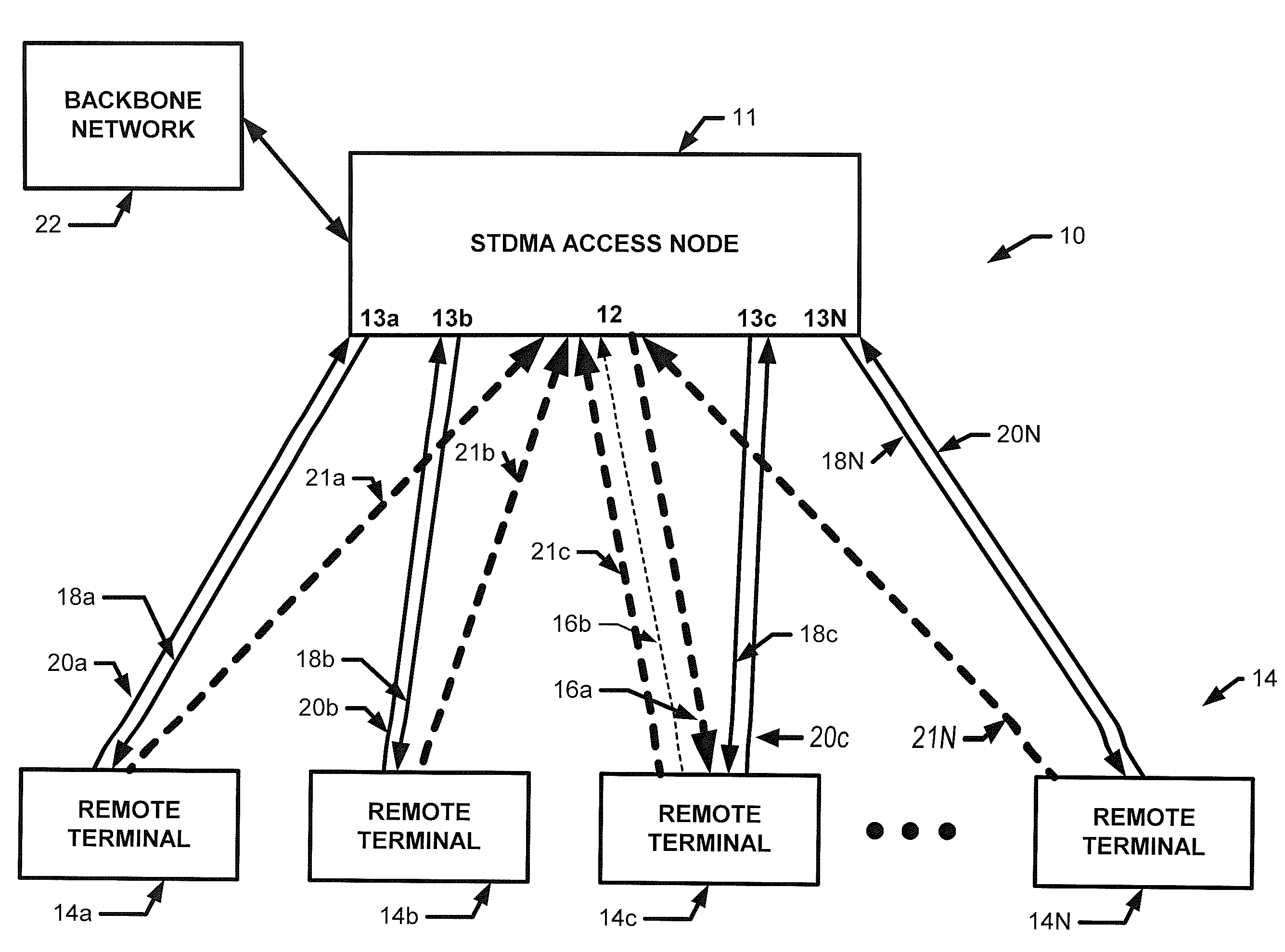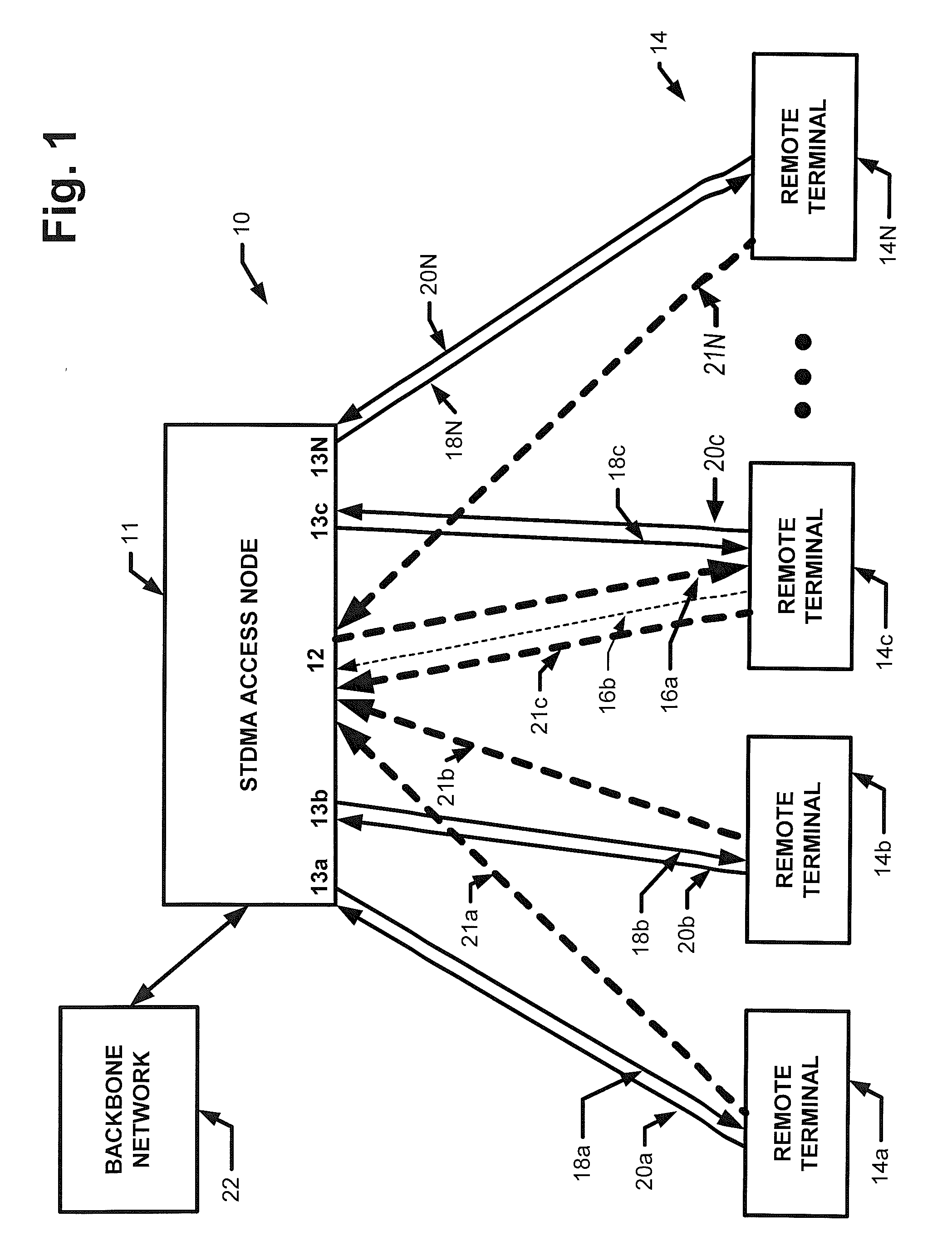Space-time division multiple-access laser communications system
a laser communication and space-time division technology, applied in the field of optical transmitreceive systems, can solve the problems of reducing the average bandwidth per user, not providing a pat aperture and tracking beacon, and the most time-consuming step in establishing fso communications links, etc., to achieve fast beam control, reduce the time-consuming, and avoid the effect of wasting resources
- Summary
- Abstract
- Description
- Claims
- Application Information
AI Technical Summary
Benefits of technology
Problems solved by technology
Method used
Image
Examples
Embodiment Construction
[0015]Referring now to FIG. 1, a space-time division multiple access (STDMA) system 10 includes an STDMA access node 11 having a single optical communications aperture 12 and a plurality of pointing, acquisition, and tracking (PAT) optical apertures 13a-13N. The system also includes a plurality of remote terminals 14a-14N, generally denoted 14.
[0016]In general overview, STDMA access node 11 uses precise electronic beam steering of a transmit communications downlink (D / L) beam 16a and a receive communications uplink (U / L) direction 16b for the uplink beam provided via optical aperture 12 to provide bidirectional network connectivity to remote terminals 14a-14N by means of both space- and time-division multiple-access. This approach combines beam hopping (space division) and burst mode communication (time division) to exploit the benefits of fast, agile, precise beam control provided by optical apertures with electronic beam steering. Using a single optical communications aperture 12 ...
PUM
 Login to View More
Login to View More Abstract
Description
Claims
Application Information
 Login to View More
Login to View More - R&D
- Intellectual Property
- Life Sciences
- Materials
- Tech Scout
- Unparalleled Data Quality
- Higher Quality Content
- 60% Fewer Hallucinations
Browse by: Latest US Patents, China's latest patents, Technical Efficacy Thesaurus, Application Domain, Technology Topic, Popular Technical Reports.
© 2025 PatSnap. All rights reserved.Legal|Privacy policy|Modern Slavery Act Transparency Statement|Sitemap|About US| Contact US: help@patsnap.com



